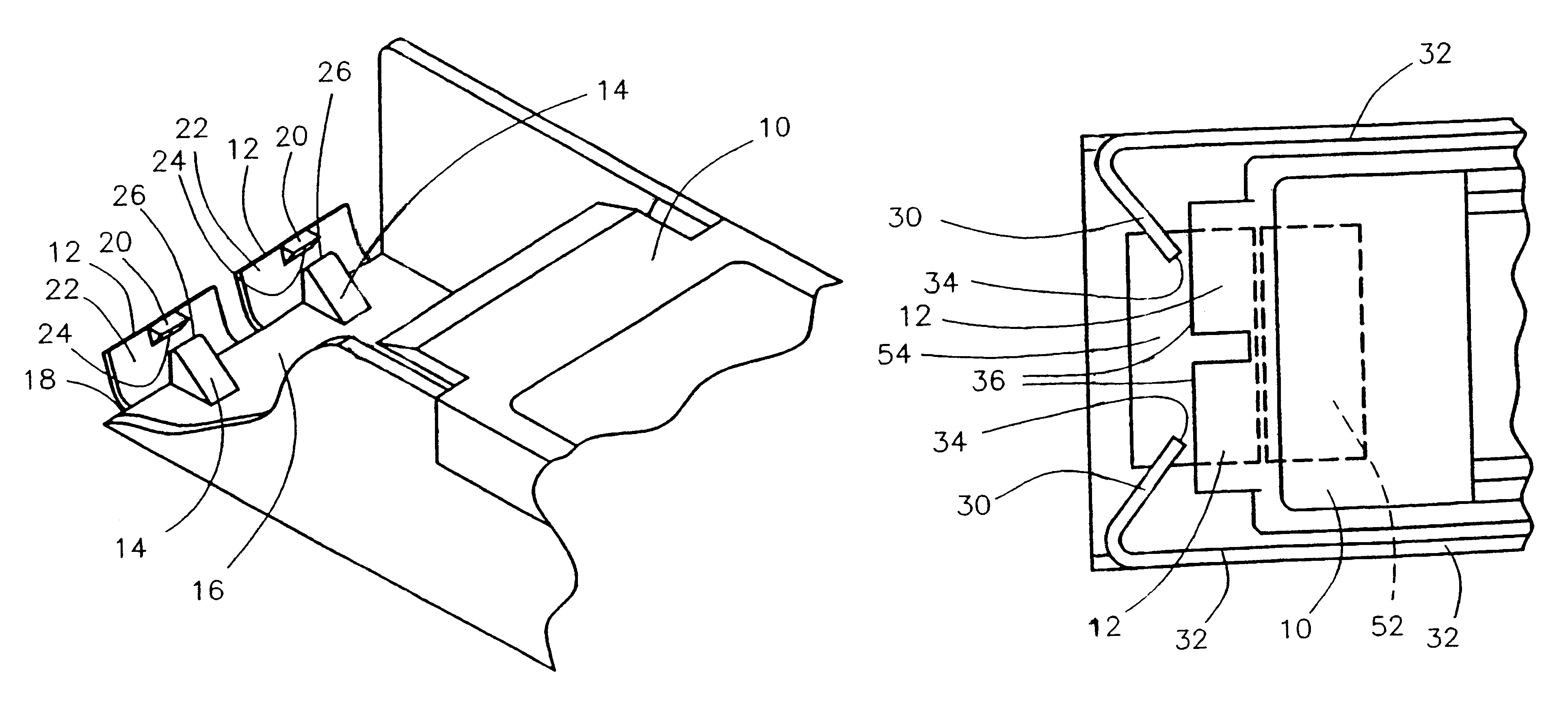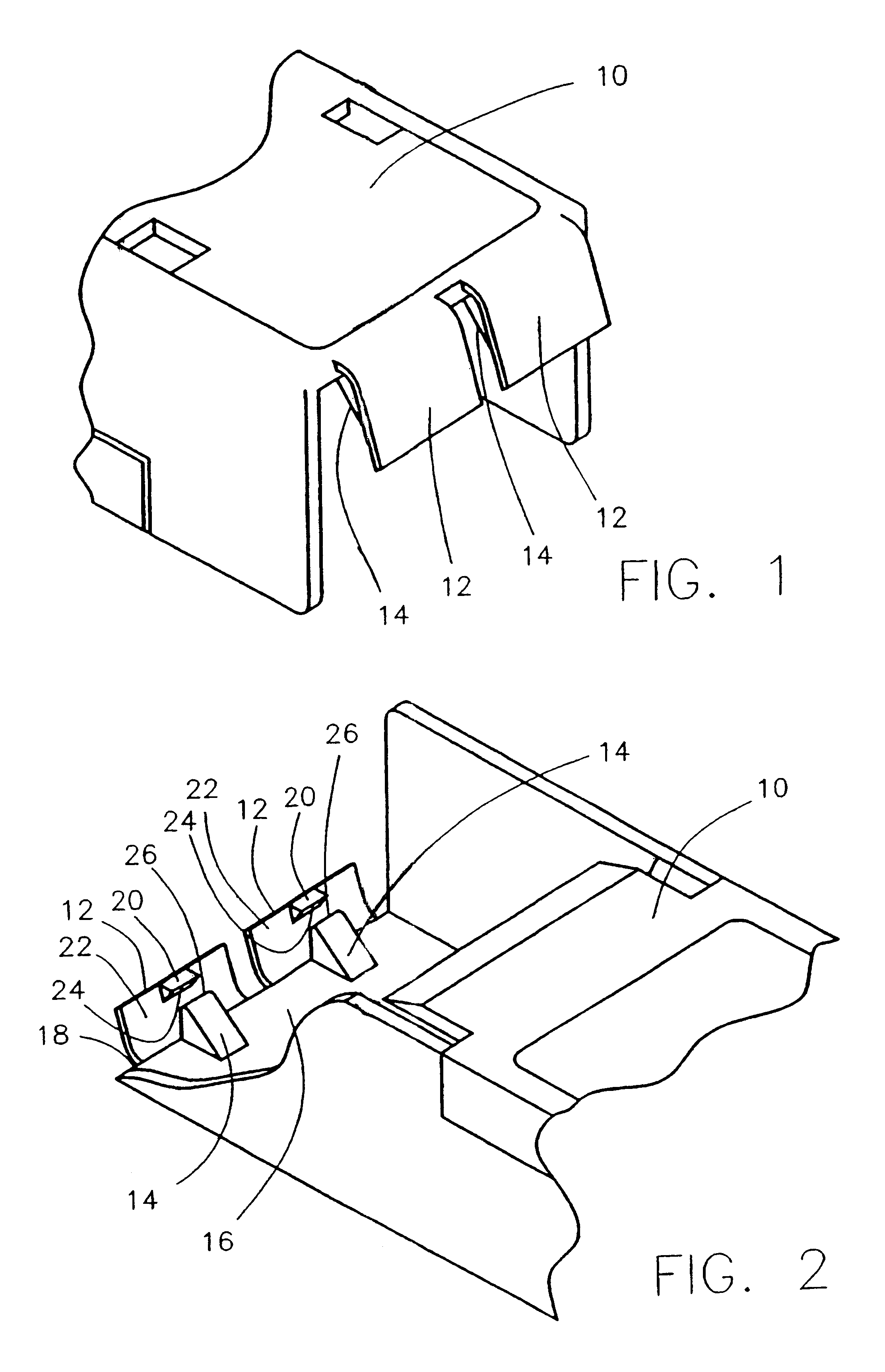Enhanced module kick-out spring mechanism for removable small form factor optical transceivers
a technology of optical transceivers and enhanced modules, applied in the direction of coupling device connections, coupling parts engagement/disengagement, incorrect coupling prevention, etc., can solve the problems of reducing the effectiveness of reducing the effectiveness of reducing the effectiveness of reducing the effect of reducing the effectiveness
- Summary
- Abstract
- Description
- Claims
- Application Information
AI Technical Summary
Benefits of technology
Problems solved by technology
Method used
Image
Examples
Embodiment Construction
Referring initially to FIG. 1, a portion of a transceiver module chassis 10 is illustrated showing two cantilevered spring members 12 integrally molded with the transceiver module chassis 10. It is preferred that two springs 12 be incorporated into the transceiver module chassis 10 in order to balance forces and symmetry; however, any number of such springs may be used so long as the forces exerted thereon and thereby do not create a binding condition within a port (not shown) for mounting a transceiver module 10.
Due to the resilient qualities of the moldable plastic, the springs 12 are deflectable or deformable under load and resilient. As is well known by those of skill in the art of plastic part design, the thickness of the springs, the dimensions of the attachment structure, the length of the cantilevered beam, and the characteristics of the materials from which the cantilevered beam and the transceiver module chassis are made will together determine the spring force constant of...
PUM
 Login to View More
Login to View More Abstract
Description
Claims
Application Information
 Login to View More
Login to View More - R&D
- Intellectual Property
- Life Sciences
- Materials
- Tech Scout
- Unparalleled Data Quality
- Higher Quality Content
- 60% Fewer Hallucinations
Browse by: Latest US Patents, China's latest patents, Technical Efficacy Thesaurus, Application Domain, Technology Topic, Popular Technical Reports.
© 2025 PatSnap. All rights reserved.Legal|Privacy policy|Modern Slavery Act Transparency Statement|Sitemap|About US| Contact US: help@patsnap.com



